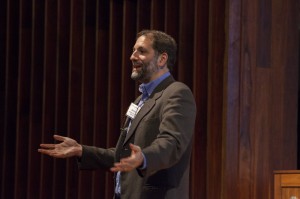The US High Energy Physics (HEP) programme is presently guided by a roadmap put together in 2008 by US Department of Energy (DOE) High Energy Physics Advisory Panel (HEPAP). Since that time the global HEP situation has continued to evolve in regards to both the physics (most notably the Higgs boson) and international HEP planning (the 2013 European strategy for particle physics update, the Japan Association of High Energy Physicists (JAHEP) report in 2012). The US has also started to update its 2008 plan, and these activities are in their final phase with the start of the so-called P5 process. Strategic planning began in the beginning of 2013 with the HEPAP facilities subpanel report. This process was part of the DOE Office of Science review of possible facility initiatives (over 100 million dollars) over the upcoming decade. The panel assessed the science goals and construction readiness but did not rank the priorities.
Both the ILC accelerator and detectors were on this list and deemed ready for construction. During past year the US HEP community has performed an in-depth evaluation of the physics landscape via the Snowmass process. The results have been reported in LC NewsLine by Hitoshi Murayama, so I will not repeat them here, but suffice to say that the ILC physics goals were strongly endorsed. The remaining step in formulating a strategic plan requires consolidating the potential facilities and science goals with the anticipated resources, or in other words, establish programme priorities. This final step is the job of the Particle Physics Project Prioritisation Panel (P5) and has recently gotten under way under a charge from HEPAP “to develop an updated strategic plan for US high energy physics that can be executed over a 10-year timescale, in the context of a 20-year global vision for the field”, along with several other goals.
A critical aspect of this planning process is the anticipated resources which will be available to implement the HEP programme. This information is provided by the DOE Office of Science and forms a framework for the prioritisation since scientific opportunities and project concepts greatly exceed budget constraints. The budget scenarios under consideration involve two somewhat different options of flat funding for three years and then inflation, together with a more flexible model that effectively poses the question of “tell how much it costs to pursue the compelling physics”. Unquestionably, establishing a coherent programme in the two relatively flat budget scenarios is the most difficult task for P5.
HEP is of course a global activity these days, and any proposed US programme must be viewed in the international as well as domestic context. Likewise there must be a balance between short-term achievements and long-term goals.
Obviously there is no “correct” answer to a strategic planning exercise but rather the need for wisdom and balance in the formulation of a plan. There are 24 members of the P5 committee (chaired by Steve Ritz, UC Santa Cruz) who will perform this delicate task. The committee has been formed and will have three main community town-hall-style meetings. The first one took place at Fermilab in early November. The other two meetings will be held later this year at SLAC and Brookhaven National Laboratory. The latter venue will contain several hours of discussion on the ILC in Japan as part of the energy frontier deliberations. Our ability at this time to accurately convey the global situation in regard to the ILC will be important even though events can move quickly. The committee will produce a draft report by early March 2014 and a final report by May. The progress of P5 can be monitored on usparticlephysics.org/p5 .



Recent Comments